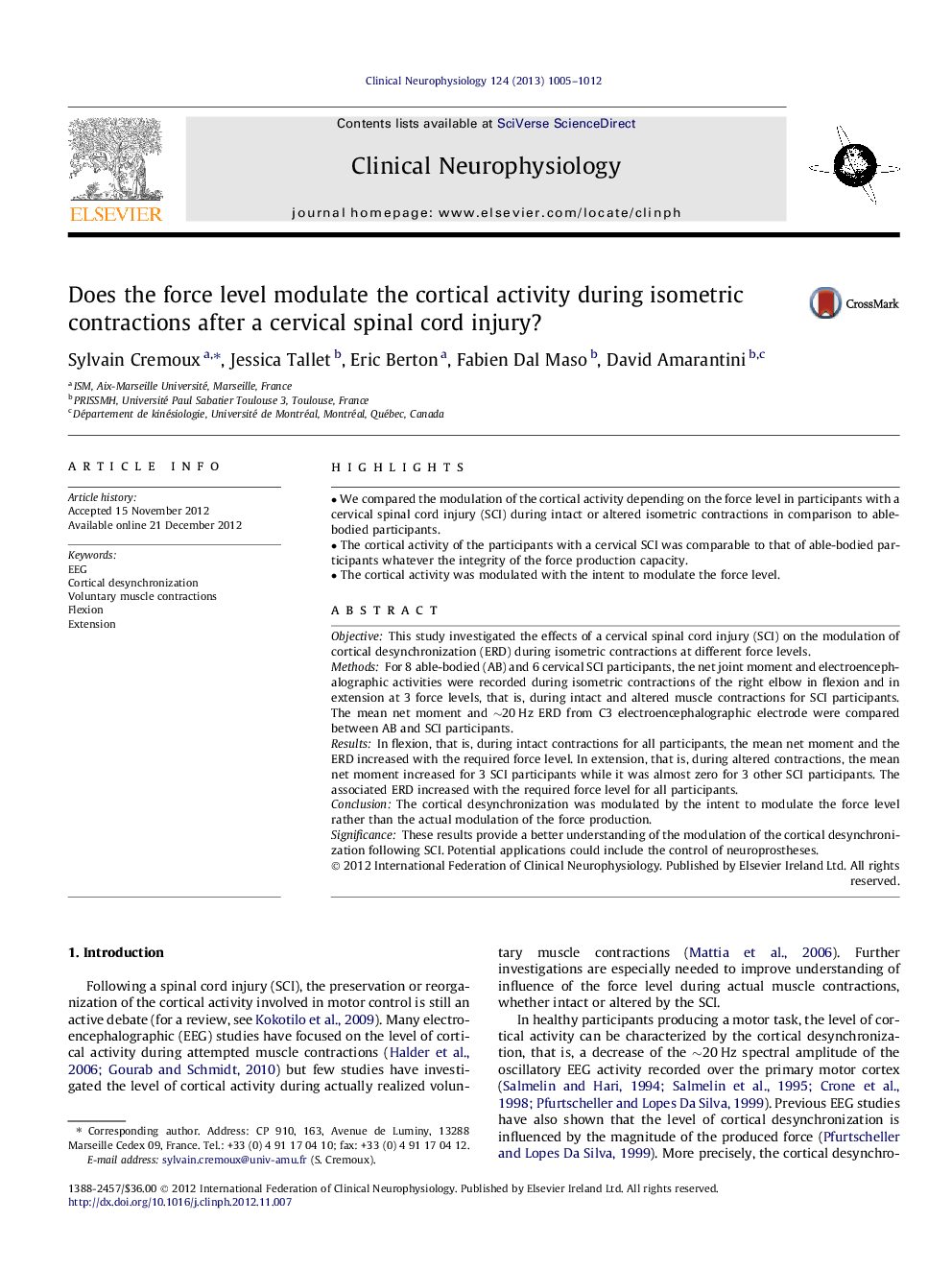| Article ID | Journal | Published Year | Pages | File Type |
|---|---|---|---|---|
| 3044339 | Clinical Neurophysiology | 2013 | 8 Pages |
ObjectiveThis study investigated the effects of a cervical spinal cord injury (SCI) on the modulation of cortical desynchronization (ERD) during isometric contractions at different force levels.MethodsFor 8 able-bodied (AB) and 6 cervical SCI participants, the net joint moment and electroencephalographic activities were recorded during isometric contractions of the right elbow in flexion and in extension at 3 force levels, that is, during intact and altered muscle contractions for SCI participants. The mean net moment and ∼20 Hz ERD from C3 electroencephalographic electrode were compared between AB and SCI participants.ResultsIn flexion, that is, during intact contractions for all participants, the mean net moment and the ERD increased with the required force level. In extension, that is, during altered contractions, the mean net moment increased for 3 SCI participants while it was almost zero for 3 other SCI participants. The associated ERD increased with the required force level for all participants.ConclusionThe cortical desynchronization was modulated by the intent to modulate the force level rather than the actual modulation of the force production.SignificanceThese results provide a better understanding of the modulation of the cortical desynchronization following SCI. Potential applications could include the control of neuroprostheses.
► We compared the modulation of the cortical activity depending on the force level in participants with a cervical spinal cord injury (SCI) during intact or altered isometric contractions in comparison to able-bodied participants. ► The cortical activity of the participants with a cervical SCI was comparable to that of able-bodied participants whatever the integrity of the force production capacity. ► The cortical activity was modulated with the intent to modulate the force level.
